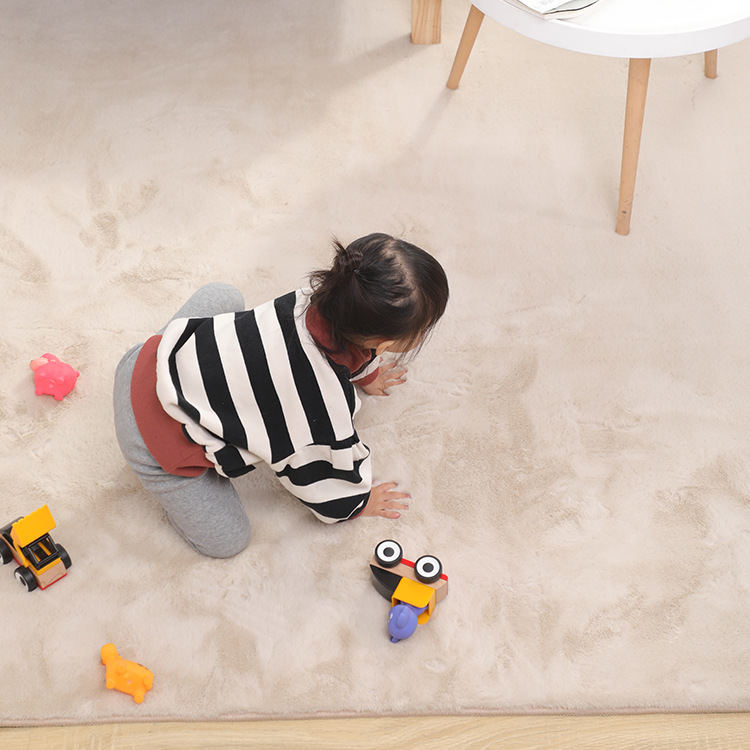 2025.08.08
2025.08.08
 Industry News
Industry News
Choosing the right rug can dramatically transform your living space, tying all your furniture together and adding warmth, texture, and style. But selecting the perfect rug size for a living room can be tricky. A rug that is too small can make your space feel disjointed and incomplete, while one that is too large might overwhelm the room. Here's a comprehensive guide to help you get it right.
The Golden Rule: Go Bigger Than You Think
When it comes to rugs and carpets, the most common mistake people make is choosing a size that is too small. A small rug can make your living room feel cramped and the furniture look like it's floating. A larger area carpet creates a sense of scale and grounds your seating arrangement, making the entire room feel more spacious and intentional.
The Three Main Layout Options
There are three primary ways to position your living room furniture on a rug. The best option for you will depend on the size of your room and your furniture arrangement.
1.All Legs on the Rug: This is the most luxurious and complete look, ideal for larger living rooms. The rug should be large enough to accommodate all pieces of furniture in your seating area—sofas, chairs, coffee tables—with all their legs fully on the floor covering. For this layout, you will likely need a very large rug, such as a 9x12 or even larger. Ensure there's a good amount of space (at least 12-18 inches) of the rug extending beyond the furniture to create a balanced feel.
2.Front Legs on the Rug: This is the most popular and versatile option, suitable for most living rooms. The rug should be placed under the front legs of all major pieces of furniture, like your sofa and armchairs. This layout visually anchors the seating area without requiring a massive, room-spanning floorcloth. It creates a cohesive conversational space and is a great compromise between cost and impact.
3.Floating Arrangement (Coffee Table Only): This layout is best for very small spaces or when you have a truly stunning, but small, tapestry you want to showcase. Here, only the coffee table sits on the rug. While it can work in a pinch, be mindful that this approach can make your furniture feel disconnected. If you go this route, ensure the rug is at least 6 inches wider than your coffee table on all sides.



Common Rug Sizes and How They Work
Understanding standard rug dimensions can help you visualize your space.
5x8 ft: This is a common but often-too-small size for most living rooms. It works best in smaller apartments or when using the "coffee table only" layout. If you have a small sofa, you might be able to get the front legs on, but measure carefully.
8x10 ft: This is the go-to size for many standard living rooms. It’s perfect for the "front legs on" layout with a standard-sized three-seater sofa and a couple of armchairs.
9x12 ft: This is an excellent choice for a larger living room or a more expansive seating arrangement. It allows for the "all legs on" layout for a sofa and chairs, creating a grand, unified space.
Runners: Don't forget runners! These narrow, long rugs are perfect for adding style and comfort to hallways or framing furniture in a long, narrow living room.
Pro Tips for a Perfect Fit
Measure Everything: Before you shop for a new area rug, grab a measuring tape. Measure your seating area and the space you want the rug to cover. Use painter's tape to outline the rug size on your floor to see how it feels in the room. This step is crucial and will save you from making an expensive mistake.
Leave Some Floor Exposed: A good rule of thumb is to leave at least 10 to 24 inches of bare floor between the edges of the rug and your walls. This creates a natural border and prevents the room from feeling completely covered.
Consider Traffic Flow: Ensure the rug doesn't obstruct doorways or high-traffic pathways. A well-placed rug should define a space, not create an obstacle.
By following these guidelines, you can confidently choose a rug that not only fits your space perfectly but also elevates the entire look and feel of your living room.